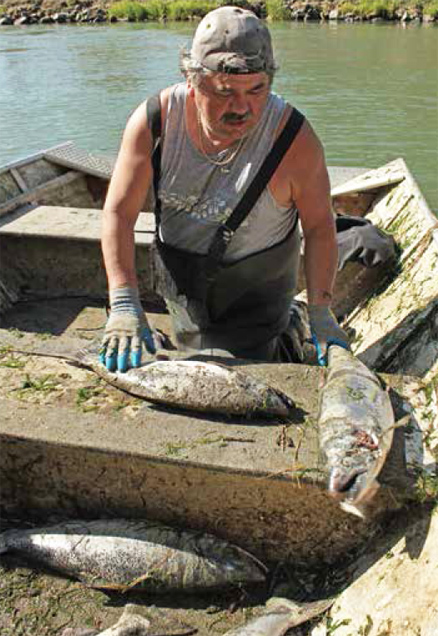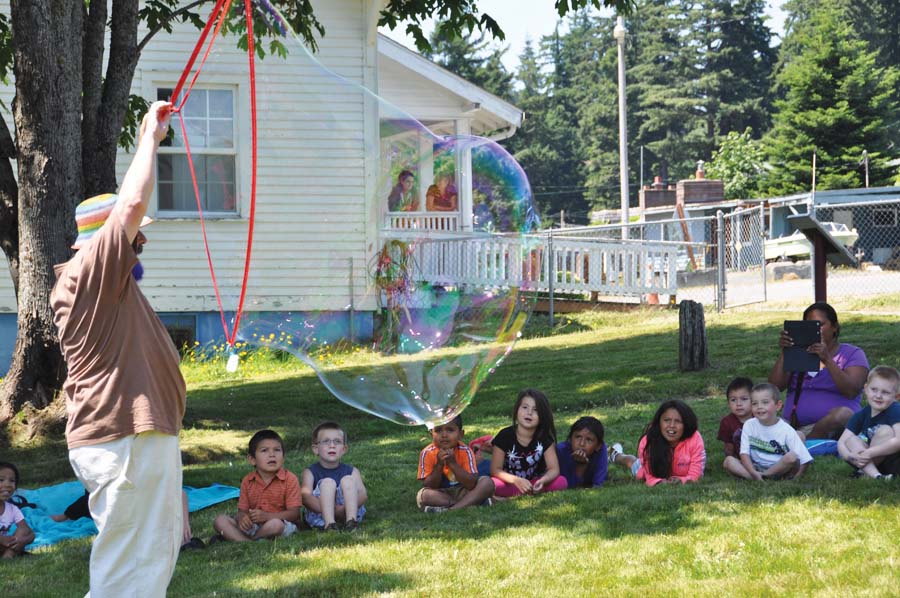| When | Saturday, July 13, 2013, 10am – 4pm |
|---|---|
| Where | Tulalip Cabela’s 9810 Quil Ceda Blvd, Tulalip, WA 98271 |
| Category | Outdoor |
| Audience | Kids, Teens, Singles, College Students, Dads, Moms, Seniors, Families |
| Cost | Free |
| Contact Name | Katie Sanford |
| Contact Email | katie.sanford@cabelas.com |
| Contact Phone | 360-474-4880 |
| Description | Be a Part of the Pink Salmon Run! Free seminars and demonstrations all weekend long. Learn from the experts and hit the water prepared to have fun!
Saturday & Sunday Located at the Tulalip Cabela’s, 9810 Quil Ceda Blvd, Tulalip, WA 98271 |
| Link | www.cabelas.com |
Diet soda won’t save you from obesity or diabetes
By John Upton, Grist
Bad news for everybody who drinks diet sodas instead of the sugary varieties to help stay healthy.
In an opinion piece [PDF] in the journal Trends in Endocrinology and Metabolism, Purdue University professor Susan Swithers writes that drinks containing such chemicals as aspartame, sucralose, and saccharin have been found to contribute to excessive weight gain, metabolic syndrome, type 2 diabetes, and cardiovascular disease. Her piece summarizes studies on the health effects of artificial sweeteners:
Recent data from humans and rodent models have provided little support for ASB [artificially sweetened beverages] in promoting weight loss or preventing negative health outcomes such as [type 2 diabetes], metabolic syndrome, and cardiovascular events. Instead, a number of studies suggest people who regularly consume ASB are at increased risk compared with those that do not.
How is this possible? Swithers describes a number of theories, some of them relating to the effects of such sweeteners on metabolism. “Sweet tastes are known to evoke numerous physiological responses,” she writes. “By weakening the validity of sweet taste as a signal for caloric post-ingestive outcomes, consumption of artificial sweeteners could impair energy and body weight regulation.”
NPR’s Alison Aubrey put Swithers’ piece into some context:
Not everyone is convinced that diet soda is so bad.
For instance, a study I reported on last year by researchers at Boston Children’s Hospital found that overweight teens did well when they switched from sugar-laden drinks to zero-calorie options such as diet soda.
But it’s also hard to ignore the gathering body of evidence that points to potentially bad outcomes associated with a diet soda habit.
One example: the findings of the San Antonio Heart Study, which pointed to a strong link between diet soda consumption and weight gain over time.
“On average, for each diet soft drink our participants drank per day, they were 65 percent more likely to become overweight during the next seven to eight years” said Sharon Fowler, in a release announcing the findings several years back.
Another bit of evidence: A multi-ethnic study, which included some 5,000 men and women, found that diet soda consumption was linked to a significantly increased risk of both type-2 diabetes and metabolic syndrome.
If you’re choosing between a diet soda and a regular soda, then it’s probably healthier to go for the former. But these studies are a reminder that such a choice won’t keep you healthy.
It’s also worth remembering that some scientists have found that artificial sweeteners can be toxic. Some countries even require health warnings on drinks containing such products, such as this one on a can of Diet Coke sold in India:

Confirmed: Fracking triggers quakes and seismic chaos
 By Kate Sheppard, Brett Brownell, and Jaeah Lee, Source: Grist
By Kate Sheppard, Brett Brownell, and Jaeah Lee, Source: Grist
Major earthquakes thousands of miles away can trigger reflex quakes in areas where fluids have been injected into the ground from fracking and other industrial operations, according to a study published in the journal Science on Thursday.
Previous studies, covered in a recent Mother Jones feature from Michael Behar, have shown that injecting fluids into the ground can increase the seismicity of a region. This latest study shows that earthquakes can tip off smaller quakes in far-away areas where fluid has been pumped underground.
The scientists looked at three big quakes: the Tohuku-oki earthquake in Japan in 2011 (magnitude 9), the Maule in Chile in 2010 (an 8.8 magnitude), and the Sumatra in Indonesia in 2012 (an 8.6). They found that, as much as 20 months later, those major quakes triggered smaller ones in places in the Midwestern U.S. where fluids have been pumped underground for energy extraction.
“[The fluids] kind of act as a pressurized cushion,” lead author Nicholas van der Elst of the Lamont-Doherty Earth Observatory at Columbia University explained to Mother Jones. “They make it easier for the fault to slide.”
The finding is not entirely surprising, said van der Elst. Scientists have known for a long time that areas with naturally high subsurface fluid pressures — places like Yellowstone, for example — can see an uptick in seismic activity after a major earthquake even very far away. But this is the first time they’ve found a link between remote quakes and seismic activity in places where human activity has increased the fluid pressure via underground injections.
“It happens in places where fluid pressures are naturally high, so we’re not so surprised it happens in places where fluid pressures are artificially high,” he said.
The study looked specifically at Prague, Okla., which features prominently in Behar’s piece. The study links the increased tremors in Prague, which has a number of injection wells nearby, to Chile’s Feb. 27, 2010, quake. The study also found that big quakes in Japan and Indonesia triggered quakes in areas of Western Texas and Southern Colorado with many injection wells. The study is “additional evidence that fluids really are driving the increase in earthquakes at these sites,” said van der Elst.

 This story was produced for Mother Jones as part of the Climate Desk collaboration.
This story was produced for Mother Jones as part of the Climate Desk collaboration.
Jaeah Lee is the associate interactive producer at Mother Jones.
Kate Sheppard was Grist’s political reporter until August 2009. She now covers energy and environmental politics for Mother Jones. Read her work and follow her on Twitter.
U.S. and China continue to play nice on climate
By John Upton, Grist
China and the U.S. continued their climate-protecting love affair Wednesday, agreeing to cooperate on five initiatives to reduce their greenhouse gas emissions.
The initiatives range “from bread-and-butter steps, such as boosting building efficiency, to what officials said would be a leading-edge effort to improve the technology for capturing carbon as it is released from power plants,” reports The Washington Post.
Wednesday’s announcement follows an agreement struck last month during meetings between Barack Obama and Chinese President Xi Jinping to work together to reduce climate-changing HFC emissions.
The U.S.-China climate change working group, which officials from both countries formed in April, will work with companies and non-governmental groups to develop plans by October to carry out the measures aimed at fighting climate change and cutting pollution. …
Secretary of State John Kerry and Treasury Secretary Jack Lew hosted a Chinese delegation, led by State Councilor Yang Jiechi and Vice Premier Wang Yang, at the talks that cover both economics and wider geopolitical issues.
The climate agreements will concentrate on improving technologies, and will not be binding and will not seek to cut emissions by specific volumes. Still, the hope is any cooperation could help lend support to wider international talks on greenhouse gas reductions and help finalize a global treaty to replace the Kyoto Protocol on climate change by 2015.
The State Department released a list of the five initiatives, which we summarize here:
- Develop projects to capture and store carbon dioxide emissions from power plants.
- Reduce vehicle emissions, particularly from large trucks, by strengthening efficiency standards and developing more efficient vehicles and cleaner fuels.
- Increase energy efficiency, first in buildings but also in transportation and industry.
- Improve greenhouse gas data collection and management.
- Promote smart grids through collaborative projects.
Together, the U.S. and China produce some 43 percent of the world’s greenhouse gas emissions, and they’ve not been leaders on climate change in past years, so their increasing cooperation is notable. “Environmental activists say this holds immense potential because of the combined size and influence of the two nations — at a time when countries are struggling to agree on a global strategy,” reports the Post.
Bubble Man returns to Tulalip
By Monica Brown, TulalipNews
On July 8th, The Bubble Man arrived at Tulalip Montessori in his purple van filled with repurposed “cheap toys.” He delighted the crowd of children and adults, or kidlings and kidults as the Bubble Man says, with his enormous soap bubbles, his quick wit and encouraging phrases such as, “Fun more time!”
With his purple beard and colorful hat, the Bubble Man strutted the schoolyard on a sunny afternoon, eliciting laughter from the kidlings and kidults. He explained to the children the importance of listening, behaving, being kind to the environment and having fun. While the Bubble Man offers high levels of bubble-making entertainment, he also delivers a powerful message to children about being environmentally conscious. Most of his bubble makers, which he labels “cheap toys”, are repurposed items he has acquired from around the world, such has rug beaters, plastic soda bottles, zip ties, silverware trays, toy horns and plastic soda can holders, to name a few.
Garry Golightly is the Bubble Man and he has traveled the world showing people the excitement and joy that comes from bubble making. Gary explained after his show, that no other toy brings so much joy, is as cheap and disappears so quickly like the bubble does. This was the third year in a row that the Bubble Man has made the trek to Tulalip.
Visit bubbleman.com for more information or call 206-781-6749.
Tribes Try Alternative Fishing Gear
Nisqually Tribe uses tangle nets, beach seines to reduce impact on chinook

Benji Kautz, Nisqually Tribe, unloads chinook during the tribe’s fishery last fall.
E. O’Connell, Northwest Indian Fisheries Commission
Treaty Indian tribes in western Washington are experimenting with fishing methods that help conserve depressed salmon
and steelhead stocks. The Nisqually Tribe began using alternative gear a few years ago, and this spring, the Lummi Nation and Upper Skagit Indian Tribe both held tangle net fisheries. Tangle nets are similar to gillnets, but have a smaller mesh size.
The Nisqually Indian Tribe will continue to lower impacts on returning chinook salmon this year.
“To make good on our recent gains in habitat restoration in the Nisqually, fishermen need to decrease how many natural origin chinook are caught,” said David Troutt, natural resources director for the tribe.
In recent years, the tribe has implemented drastic changes to its fishing regime, including a decrease of 15 fishing days since 2004; reducing the number of nets that can be used by a fisherman from three to two; and having just less than a month of mark-selective fishing with tangle nets and beach seines.
This year’s fishing plan will continue implementing mark-selective fishing, but only with beach seines.
“A historically large run of pink salmon is forecast to come in alongside chinook and coho this year,” Troutt said. Tangle
nets – which ensnare fish by their teeth – would catch an un- usually high number of pinks, which tribal fishermen aren’t targeting.
“Since 2004, Nisqually tribal fishermen have already cut hundreds of hours off their chinook season,” Troutt said. “Tribal fishermen are bearing the brunt of conservation for these fish so we can help them recover.”
In a mark-selective fishery, fishermen release natural origin fish that haven’t had their adipose fin removed in a hatchery. The adipose fin is a soft, fleshy fin found on the back behind the dorsal fin. Its removal does not affect the salmon.
“Mark-selective fisheries are a useful tool and the Nisqually is a unique place in western Washington where it could benefit salmon and tribal fisheries,” Troutt said.
Oglala leader confirms Johnny Depp looking at Wounded Knee
Source: Indianz.com
Actor Johnny Depp, the star of the U.S. box-office bomb The Lone Ranger, is interesting in buying the Wounded Knee massacre site, the leader of the Oglala Sioux Tribe said.
President Byran Brewer confirmed Depp’s interest in a statement to the Native Sun News and in an interview with Last Real Indians. He said representatives of the actor asked for permission to make an offer on the land.
“[A]ll I can say is that I would love for Johnny Depp to come out, the Lakota Nation would welcome him for a sit-down to see that our name ‘Lakota’ truly means Allies or Friends,” Brewer said in the interview that was posted by Last Real Indians.
Owner Jim Czywczysnki has put up the 40-acre site of the 1890 Wounded Knee massacre, plus an adjacent 40-acre site, for a total of $4.9 million. The tribe has questioned the asking price of the main site, since a recent appraisal put its value at $7,000.
Depp told The Daily Mail that he is interested in buying the site and returning it to the tribe. “It’s very sacred ground and many atrocities were committed against the Sioux there,” he told the paper.
“This historical land is so important to the Sioux culture and all I want to do is buy it and give it back,” Depp added.
Related Stories:
Native Sun News: Oglala Sioux Tribe in Wounded Knee talks (6/13)
Mets Alter Event, Upsetting American Indian Group
By Scott Cacciola, The New York Times
It has not been an easy season for the Mets, who are lurching toward the All-Star break with a losing record. Opposition has come in the form of hard-throwing pitchers, mounting injuries and marathon-length games, but the team suddenly finds itself facing heat from an unexpected source: an American Indian organization.
When the Mets approached the American Indian Community House, a New York-based nonprofit organization, in March about helping to organize a Native American Heritage Day, the proposal struck members of the group as a good opportunity to celebrate their involvement in the community. A date was selected — July 25 — and they began to plan pregame festivities that would include traditional dancing and singing outside Citi Field.
But there was a glitch, as far as the Mets were concerned: they were scheduled to host the Atlanta Braves that day. So in the past week, concerned that such activities might be interpreted by the Braves organization as a form of protest over its nickname, the Mets drastically reduced the day’s activities: no singing, no dancing. And now there won’t be any American Indians, either.
On Monday, the A.I.C.H. pulled out of the event, citing frustration with the Mets for thwarting months of planning. The team has removed the event from its online schedule of activities.
“Being a nonprofit in the city, we’re not in the business of making enemies,” said Kevin Tarrant, the deputy director of the A.I.C.H., which describes itself as an organization that aims to “cultivate awareness, understanding and respect” for thousands of American Indians who live in New York City. “This whole thing wasn’t even our idea. But it just feels like we’re being marginalized again within our own community.”
A Mets spokesman said the team “opted to forgo the group sale in this case as our multicultural days and nights are celebratory versus political in nature.”
The Mets host multicultural events throughout the season as a form of community outreach. During the first week of August, for example, the team will stage Irish Heritage Night and Taiwan Day.
Tarrant said his group originally hoped to hold the festivities in early June so that the game would coincide with an area powwow, a traditional American Indian gathering. But with the Mets on a road trip that week, the group suggested July 25 as another option. It was a 12:10 p.m. game, Tarrant said, which meant more children were likely to attend. Also, another powwow was planned for the following weekend in Queens.
That the Mets were scheduled to face the Braves that afternoon was coincidental, Tarrant said, though the group was not so naïve as to ignore the political overtones. Various groups have criticized the Braves for their use of American Indian imagery, in particular the team’s Tomahawk Chop chant.
“It wasn’t like we were planning to protest anything,” Tarrant said. “We just thought it would be great to show natives in a positive light — that we’re human beings, and we’re not from 300 years ago. We’re visible.” He added: “It was a win-win situation. We’d be supporting the Mets, the Braves and Major League Baseball.”
On March 27, a Mets ticket sales representative, who was working with the A.I.C.H. on the event, sent an e-mail requesting that the group draft a letter explaining why it had chosen a Braves game. The Mets’ foremost concern, at least at the time, appeared to be squarely on the sensibilities of the American Indian community.
“It is good to inform others that the Braves do not make a profit off of the sale of the game,” the Mets representative wrote in the e-mail, “and no money would be going to support their organization.” She attached an invoice for payment.
As part of the deal, the A.I.C.H. agreed to pay a $2,000 deposit to cover roughly 15 percent of the cost for a block of 500 tickets, which the group would then help sell. In exchange, the A.I.C.H. would be free to stage pregame festivities outside Citi Field, including traditional dancing and singing as fans made their way to the stadium from the subway station. Rick Chavolla, the A.I.C.H.’s education and development officer, said the performances were largely intended to raise awareness for Native Americans living in the city.
“Not a lot of people invite us to step on a great stage like that,” Chavolla said. “We were really looking forward to it.”
The Mets also agreed to print 500 T-shirts (proposed design: the team logo adorned by feathers) and to broadcast two public-service announcements for the group on the stadium’s video boards.
Tarrant said the A.I.C.H. soon decided to make the game the centerpiece of an annual Native American Week, with events across the city like panel discussions and dance performances. NativeOne Institutional Trading, an American Indian-owned broker dealer based in New York, signed on as a co-sponsor. Tiani Osborn, a managing member at NativeOne, said the logistics required “months of planning.”
As for the game, the A.I.C.H. began to promote it in early April. In an e-mail to the Indian Country Today Media Network, the group pitched the event as a “great opportunity to educate the public about the stereotypes professional sports teams continue to promote through logos, mascots and fan traditions, such as the ‘tomahawk chop.’ ” But if Mets officials harbored concerns with that type of language over the coming months, they chose not to express them publicly.
It was not until July 1 that the Mets contacted the A.I.C.H. to inform the group of significant changes to Native American Heritage Day: no public-service announcements of any kind, and no pregame festivities outside the stadium. The group could still attend the game and do some fund-raising, but that would be the extent of its involvement.
The Mets, Osborn said, suddenly seemed “only to be interested in holding a Native American Heritage Day without the culture.”
Last Wednesday, a member of the Mets’ group sales department e-mailed the A.I.C.H. in response to a series of questions from the group, which sought an explanation.
“It was brought to my attention that we need to be sensitive to the Braves being a partner MLB team and can’t put them in a situation for a potentially negative environment to be brought upon them,” the Mets official wrote. “I know this is not the plan, but sometimes people come to events under different agendas than expected. I’m not referring to [A.I.C.H.] or any of the organizations involved, but more about unknown groups that may want to change the perception of the event.”
The Mets official wrote in the e-mail that the Braves had nothing to do with the decision. The Mets later proposed two alternate dates: Aug. 8 against the Colorado Rockies and Aug. 25 against the Detroit Tigers. Tarrant said the A.I.C.H. had already planned a full week of events around the game scheduled for July 25.
On Monday, the A.I.C.H. decided to call the whole thing off and ask the Mets for a refund.
“We’re not trying to be overly sensitive,” Chavolla said, “but it seems like we fall into this type of thing a lot. We’re led to get enthusiastic about something, and then it’s like, ‘Oh, never mind.’ It’s disappointing, but it sort of amplifies a pattern of what we’ve been dealing with for hundreds of years.”
Innu First Nation will not back down in fight against Rio Tinto’s IOC
Jean-Claude Therrien Pinette, Uashat Mak Mani-Utenam
(UASHAT MAK MANI-UTENAM, QC) The Innu First Nation of Uashat Mak Mani-Utenam wishes to remind potential purchasers of Rio Tinto’s share of Iron Ore Company of Canada (IOC) that the Canadian Aboriginal group continues to fiercely oppose IOC’s mining, railway and port operations within their traditional territory. One of the measures the Aboriginal group has taken was to file legal proceedings against IOC on March 18, 2013, along with another aboriginal group, the Innu First Nation of Matimekush-Lac John, asking the Court to block IOC’s operations in Quebec and Labrador as well as to grant them damages in the amount of CAD$900 million – see press release of March 20, 2013.
IOC’s operations on the traditional territory of Uashat Mak Mani-Utenam and their Innu brothers and sisters of Matimekush-Lac John have scarred the land as well as people’s lives for more than 60 years now. The Innu are well pas their breaking point and in addition to the above legal action, IOC can expect further acts of opposition in the coming months.
Meanwhile, Rio Tinto continues to seek to sell its majority stake in IOC. And while it is clear that Rio Tinto is looking to offload assets, the Innu First Nation of Uashat Mak Mani-Utenam cannot help but feel that Rio Tinto is also seeking to offload the “Innu problem”.
“We simply wish to make clear that any purchaser of Rio Tinto’s stake in IOC will run up against the same fierce opposition that is currently underway against IOC. The conflict will not end until the more than 60 years of injustice we have endured at the hands of IOC comes to an end,” stated Mike McKenzie, Chief of the Innu First Nation of Uashat Mak Mani-Utenam.
“While Rio Tinto is looking to move on, our people are not going anywhere. We will still be here, occupying our traditional territory like we always have and unfortunately living with all the negative impacts IOC’s projects have caused and continue to cause,” added Chief McKenzie.
In fact, the Innu First Nation of Uashat Mak Mani-Utenam would like to take this opportunity to remind any potential investor looking to do business on their traditional territory (covering much of northeastern Quebec and Labrador) that they will defend to the end the principle that any project on their traditional territory requires their consent.
Those who walk together rise up together
By Susie Cagle, Grist
From New York’s Zuccotti Park to Egypt’s Tahrir Square, popular uprisings of the last few years have often been credited to the organizing power of digital social networks like Twitter and Facebook. But shared public spaces in dense urban areas have a lot more organizing power than hashtags or retweets, and there’s new research to back that up.

The Urban Affairs Review paper “Walk and Be Moved: How Walking Builds Social Movements” by Brian Knudsen and Terry Clark underscores how dense city-living exposes residents to new ideas and connections, and in turn fosters the creation of social movement organizations. The authors (Knudsen works at Urban Innovation Analysis, a Chicago design firm, and Clark is a sociology professor at the University of Chicago) base their research on the interaction between the urbs — our physical infrastructure, our streets, our parks, our commerce — and the civitas — the people who give those places meaning collectively.
Knudsen and Clark say they are “the first to discover and analyze electronic unpublished data for environmental, human rights, and other types” of social movement groups, and compare them to how city spaces are used and lived. Their analysis shows that it’s not just the existence of those shared public spaces, but the way we use them that contributes to making a city more politically active. Specifically, a more active city is one that uses its two feet.
“The study provides substantial evidence that it is not just density, or the crowding together of people in urban areas, that shapes political and social activism, but the direct engagement of the city through walking,” Richard Florida writes at Atlantic Cities.
We’ve intuitively known that cities spawn social movements for a really long time. It’s been 45 years since Henri Lefebvre wrote about our “right to the city” — our right, that is, to “demand a transformed and renewed access to urban life.” Lefebvre wasn’t the only, or the first, one to point this out. (Hey Jane Jacobs! Hey Aristotle!) But these ideas are especially relevant in light of the last few years of global political action.
“In our historic moment, social grievances are inextricably tied to urban living,” Marc Tracy writes about the recent uprisings in Brazil at the New Republic (uprisings that, it should be noted, were sparked by an attempt to raise bus fares). “And since the characteristic attribute of a city is density and the characteristic attribute of density is the flinging together of people from different walks of life, Brazil’s protests have engaged a broad swath of the population.”
Brazil made the right to the city national law in 2001. But do the same forces come to bear in U.S. cities? Stateside, cities seem more concerned about attracting “new talent” than fostering social justice these days. Talk among urbanists is more about bike lanes and coffee shops than lowering transit fares.
According to the study’s authors, “walking effects are larger than income, local rent, or racial diversity.” But it seems ill-advised to rule those factors entirely, especially when our cities are in flux, and when the authors are using data from the year 2000. Since then, many U.S. city centers have grown more affluent and white, while the formerly cloistered, non-walkable suburbs have become more poor and brown.
What might those shifts mean for the future of urban activism? A diversity of population and ideas is what makes the real magic behind walkability — not just the walking itself. People have to be exposed to the breadth of the human condition if they might be motivated to change it. Will social and environmental justice organizations sustain in dense neighborhoods that become richer, and more homogenous? Can that diversity of ideas sustain without a diversity of people?
Put another way, will new city residents still be motivated toward social and environmental justice issues, or will they be content to sip soy lattes and ride bikes while donning very hip-looking helmets?
Ultimately — ideally! — if these dense, walkable places can accommodate newcomers without losing sight of longtime residents, everyone stands to benefit. To do that, though, we’ll need to maintain a diverse political dialog — in the public squares, of course.













